Mynah birds are intelligent, talkative and lovable. Also known as Myna birds, they grow from 12 to inches tall as adults and can live for up to 25 years. The beautiful Mynah bird is a member of the Starling family and come all the way from Africa, India and Asia, where they eat a diet of insects, crustaceans, fish and rodents. The most popular pet Mynah birds are the Hill Mynah and Common Mynah, although you might not find one at your local pet store! These chatty tropical birds have a friendly temperament and are amazing at mimic human speech, secondly only to the parrot! Today we’ll look at how to find, care for and raise your very own pet Mynah bird.
Contents
- What is a Mynah Bird?
- Mynah Bird history
- What do Mynah Birds look like?
- Are Mynah Birds friendly?
- Pet Mynah Bird care
- Baby Mynah Birds and Mynah Bird adoption
What is a Mynah Bird?
Mynah birds are popular pets that originally come from Africa, India, and Southeast Asia. Like starlings, they belong to the Sturnidae family of birds. Hill mynahs are most often found in dense tree canopies. Whereas the common mynah is more often found in open grassland and areas occupied by humans.
Spelling of ‘mynah’ varies depending on where you look. Some places refer to the ‘myna bird’ instead, dropping the ‘h’. The main reason for their popularity as pets is their ability to imitate human speech. However, some varieties of this bird are better at this than others.
There are a number of different types of mynah bird. This includes the Greater Indian Hill mynah, Lesser Indian Hill Mynah, Bali Mynah, Pagoda Mynah, and Java Hill Mynah. The hill types are the most common versions found as pets.
Where Does the Mynah Bird Come From?
As we’ve already mentioned, this bird originally comes from India, Africa, and Southeast Asia. Hill mynahs are the most popular variety to keep as pets nowadays. But, this popularity isn’t new! They’ve always been loved for their talkative natures.
They were kept by the aristocracy in Greece and rulers in Nepal over time. And, in India, these birds were long considered sacred, even having a place in Punjabi legends. Throughout history, and even now in some places, the common mynah has been seen as a friend to farmers. He eats insects that plague crops and help with seed dispersal.
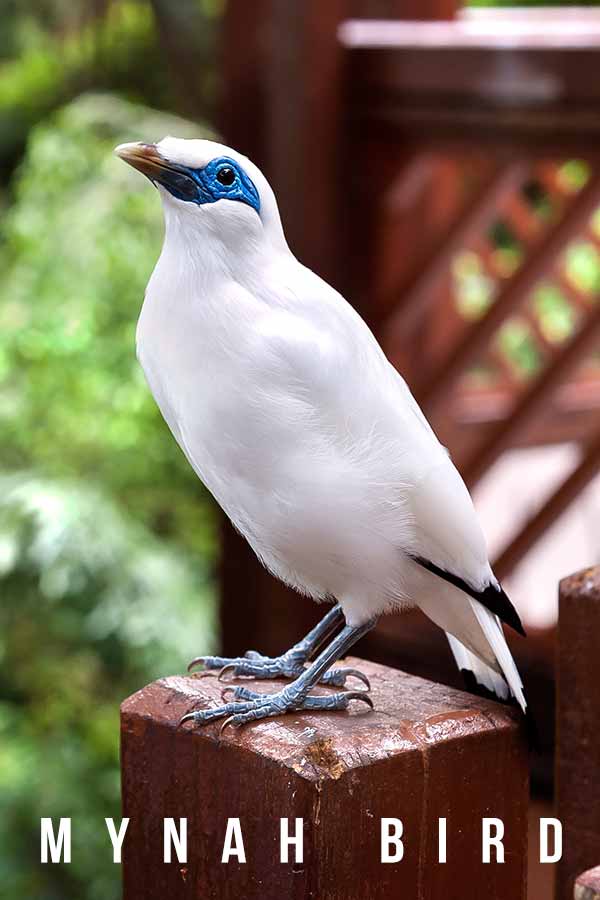
Downsides to This
In 1862 the common variety was introduced to Melbourne, Australia, in the hopes of reducing insects and pests in crops. It was successful at this in its country of origin, so seemed like a natural solution!
However, the bird started to become a nuisance. It was named Australia’s most significant pest in a 2004 survey. Instead of just eliminating insects, bird pests like the mynah in Australia caused extensive damage to fruit, cereal, and oilseed grain crops.
Mynah Bird Appearance
The mynah bird is a popular pet thanks to its talking abilities. But what does it look like? Seeing as the hill mynahs are the most common type of pet, we will focus on their appearance. But remember, appearance does vary depending on what type of mynah you get.
Adult mynah birds will most often weigh between 12 and 18 pounds. They have glossy black feathers with a purple and green sheen. You will also see a white patch on their wings.
They have yellow wattles on either side of their heads, resembling headphones slung around the neck. The coloring on your myna will get brighter as he ages.
Bali Mynah
Another popular pet variety is the Bali mynah. This bird has white feathers all over, but blue coloring around its eyes, like the pictures at the top of this guide.
The tips of its wings are black, in contrast with its white body.
Other than its coloring, it closely resembles the hill mynahs in shape and size.
Mynah Bird Facts
These birds have been close to civilisation throughout history. So, it’s no surprise that they’re found in literature! If you’re interested in poetry, read ‘The Indian Myna’, written by C. J. Dennis in 1935.
Mynah Bird Temperament
The mynah bird is an intelligent pet. This is partly why they are so quick to pick up and mimic human voices! They are also active, social, and lively. So, they need plenty of space and lots of interaction from their owners.
They are a great choice for people who want a bird they can interact with. You’ll have lots of fun listening to it mimic your speech.
If you get your bird at a young age, it will be easy to tame it. This will allow you to hold your bird.
A well tamed mynah will be comfortable around you and pick up speech easily.
Mynah Bird Health
Like any pet, there are some health issues in the mynah bird that new owners need to be aware of. When you first get your bird, take them to the vet, and make sure to attend regular check ups. Here are some health problems that have been known to affect the mynah:
- Parasitic diseases such as Atoxoplasmosis
- Diabetes Mellitus
- Liver problems
- Iron storage disease
- Obesity
- Tumors
But despite these problems, most mynah bird pets have pretty long lifespans.
Mynah Bird Lifespan
This pet bird usually lives for somewhere between 12 and 25 years. By taking your myna for regular vet check ups and giving them great general care, you will be able to extend this lifespan for as long as possible.
Do Mynah Birds Smell?
If not regularly cleaned out, this pet bird can become quite smelly. They like to eat a lot of moist foods, and can be quite messy pets. Their droppings are often loose, frequent, and sometimes projectile!
This means they aren’t ideal pets for everyone. Owners must be happy to clean this up, otherwise bad smells can accumulate. These pet birds are also known to love daily baths. But again, this can be quite a wet and messy process.
Mynah Bird Care
A mynah pet will need plenty of space if he is going to be kept in a cage. Stimulation in the form of perches and baths are a great addition. It will need room to fly each day, too. So, either a very long cage, or the chance to spend time outside his cage every day. Nesting boxes are usually preferred for these birds to sleep in.
They are omnivorous and eat a lot. So, make sure you’re offering them a wide variety of fruits and insects, as well as bird feed. Bird feed pellets are designed to meet as many of the mynah’s nutritional needs as possible, but should not be the only thing you feed them.
Remove uneaten fresh food regularly to prevent mould from developing in your Mynah’s cage.
Caring for a Baby Mynah Bird
It’s uncommon to come across baby mynah chicks in pet stores. You will most likely have to go to a breeder. This has its benefits, as you can choose a breeder who hand raises healthy birds. Babies who have been hand raised are more likely to be friendly, confident, and social.
They are also more likely to adapt easily to new environments. You will need to socialize a baby mynah bird to lots of different stimuli in order to reduce fearfulness. This includes car journeys, and as wide a variety of people as possible.
Rescuing a Mynah Bird
Mynahs are very popular pets. But, they aren’t suitable for everyone. So, you might be able to find them in a rescue center. Mynahs are sometimes relinquished to shelters because
- their owners were unprepared for the reality of looking after them,
- or their mess was incompatible with the arrival of a baby,
- or an older person was unprepared for how long they live, and has become too old to give them them the care they need.
Find Out Why
So rescuing a mynah bird is a great way to give them a second chance, but make sure to go armed with lots of questions.
It might be harder to introduce an adult mynah bird to your home than a baby.
But, if you’re willing to put in the work, they can still make very rewarding companions.
Similar Breeds
If you like the mynah bird but aren’t sure it’s going to be right for your home, here are some other birds that you might want to consider.
- Peach Faced Lovebird
- Fischer’s Lovebird
- English Budgie
There’s a lot to learn about this pet bird. So, let’s summarize.
Is a Mynah Bird Right for Me?
These birds are talkative, intelligent, and social. So, they need plenty of interaction and mental stimulation. They have quite a lot of nutritional needs, but you will be able to share lots of new foods with them.
Mynahs can be quite messy birds. So, you’ll need to work hard to keep them clean and minimize any smells. If you have a lot of time to dedicate to a bird, this could be a great option. And you’ll be rewarded with a very interactive relationship, rather than one which only flows one way! But, you might struggle to find one if there are no breeders around you.
Do You Have a Mynah Bird?
If you have a mynah bird at home, make sure to tell us about them in the comments! We would love to hear about your experiences.
More Pet Bird Information
- Peach Faced Lovebird
- Fischer’s Lovebird
References And Resources
- Lovette, I. & Rubenstein, D. ‘A Comprehensive Molecular Phylogeny of the Starlings (Aves: Sturnidae) and Mockingbirds (Aves: Mimidae): Congruent MtDNA and Nuclear Trees for a Cosmopolitan Avian Radiation’, Molecular Phylogenetics and Evolution (2007)
- Anderson, G. ‘Myna Birds’, Garrett Phelan (2009)
- ‘The Indian Mynah‘, Institute of Australian Culture
- Bomford, M. & Sinclair, R. ‘Australian Research on Bird Pests: Impact, Management, and Future Directions’, Emu (2002)
- Mimapan, S. (et al), ‘Atoxoplasma Infection in a Common Mynah (Acridotheres Tristis)’, Journal of Thailand Veterinary Medical Association (2006)
- Bartlett, S. (et al), ‘Diagnosis and Management of Diabetes Mellitus in a Bali Mynah (Leucopsar Rothschildi)’, Journal of Avian Medicine and Surgery (2016)
- Sheppard, C. & Dierenfeld, E. ‘Iron Storage Disease in Birds: Speculation on Etiology and Implications for Captive Husbandry’, Journal of Avian Medicine and Surgery (2002)
- Weber, N. ‘Birds: Health, Diseases, and Prevention’, Caring for Family Pets (2011)
- Powers, L. ‘Veterinary Care of Passerines (Songbirds)’, Association of Avian Veterinarians (2011)
- Reavill, R. ‘Tumors of Pet Birds’, Veterinary Clinics Exotic Animal Practice (2004)

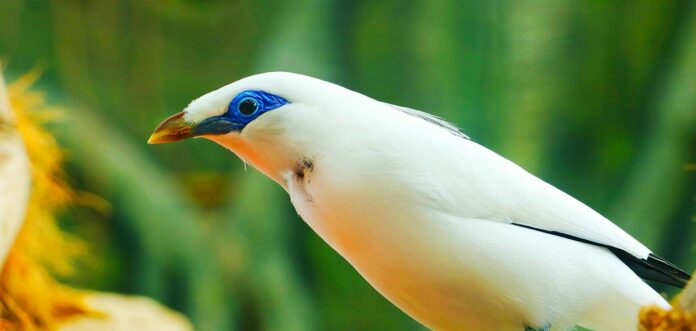
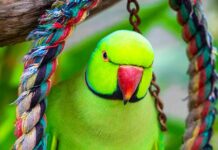
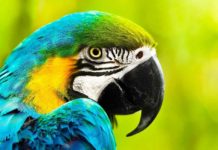
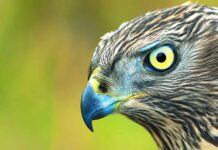











We do a n adopted young pair!
We named the younglings Heckle & Jeckle — Heck the male and Jeck the female .
They are of the Common Created Martinez (Mynah endemic in our country Philippines.
My Indian mynah starts loosing facial feather around the the neck and eye area not sure if is changes because of season
It could be due to moulting. But mine started to lose condition and also the yellow colour in its eye patch. After a bit of experimenting we discovered that putting his cage outside most days for at least 20 minutes in the sun sorted this out.
Make sure he has some shade in the cage so he can get out of the direct sun if he gets too hot.
I have a common Mynah. Born in , so 11 years old now. Called it Dexter, but may be a female. Often will next in its food bowl for a period of time once a year. So not sure, is defensive at this time. Comes out of the cage often and loves to sit on my head. If sitting on my hand always starts to peck. Loves to puff up and talk alot. fav words Super, great whistles and clicks. Has had a mostly bald head for alot of years now. Sounds like this may be a common trait in the wild with them. Has been a good pet. Not sure how long common mynahs live.
Was always looking for an indian hill, but very hard to find in Ontario Canada
two myna live in our neighborhood and a months ago i found their baby who couldn’t flying ,i wanted to ask you that when i can release it ?
everyday i open the window and put it in front of window in a cage and they come to visit their baby
Hi,
I have a hand raised common mynah male and he is so cute and talks really well. He had his first molt nod turned one year old this year. Being super tame, he suddenly became aggressive and started attacked out faces targeting and pecking our eyes. I have been shocked and heartbroken by his behaviour and after being attacking at least a dozen times and experienced bloody scratches on my face and nose and eyes (even after I wore safety goggles). He still sings and talks, and misses being with his human flock. I am hoping his behavior is because of his molt, or bluffing behaviour, or hormonal. I found other people that experienced mynah birds targeting and pecking eyes specifically, and there is even a video of a zoo keeper getting flown at and pecked in the eye by a Bali Mynah.
Has anyone experienced this with their precious, hand Fed pet Mynah?
Hi Lisa, I have a common mynah male as well. He is grumpy when he moults…but worse in breeding season! He doesn’t go for our faces, but he attacks our hands and feet. He is still chatty and sings to us etc…but becomes very touchy about his cage, the sink and my laptop. I am wondering if it is him being territorial? He has been really aggressive this summer! Its weird because he is attached to us!
My vet said if you get there wings clipped so can still fly but not get normal hight.It makes them safer and takes away there agression. My 2 are great now and only nip our hands if we don’t share our breakfast with them.They are 6 and I reared them from there eggs.They love us and would never fly away.
We have 2 mynah birds male and female, the Male is tame and when they molt they are agressive but after they molt they settle down. The Female takes more to my grandad and the Male takes more to me (Female) like parrots, we can hand feed the male, he has a wide vocabulary. He does like to play rough so we give him a empty toilet roll and he gets all his energy and atatched mode on that roll lol
i found a baby in a basement being attacked by a cat . i took it along with me and just by checking internet started feeding and caring for it , i have following issues
1)since two weeks its with me bur as it grow i am feeling its shivering alll the time periodically and as in pakistan there are no vets who can take care of a mynah so kindly tell me why its so and how i can cure it
2) its feathers are very less as compared to mynah babies shown in pics in internet .
3) i feed it with syringe but it refuses to eat by himself of something other than semi liquid
4) its flying to very small intervals more like jumping and flying and then fall down how can i teach it flying
5) i usually grind rice , bread and fruits/vegetables and feed it by syringe , is it appropriate food.
6) how can i find its age , i rescued it 2 weeks ago when it was about to be dead by cats attack .
regards
i can provide video / pics so that you can help me
We are also in the same boat…had rescued a baby mynah one month ago…no knowledge of how to raise it, we started feeding wheat apple cerelac through syringe..now gradually moving to mushy fruits like sitaphal, banana…but now it has started to lose its feathers…hopefully it is molting and grow its feathers back.Hope this helps
I’ve a few questions about handfeeding baby myanh, hope you can help:
1) We feed it moisten and soften bread, apple, papaya, banana, boiled carrots, cooked rice and some other food we eat, like noodles and very little meat). We feed him with a tweezer or popsicle stick (filed to fit his mouth nicely)
He seems to enjoy the food (whatever we give) initially and very soon start to stop eating them (like just 2-3 feeds). Since he is fully feathered and can fly for short distances, we decided to give him diced fruits to peck on his own, but he never ate any. He still wants to be fed, but at the same time, he doesn’t eat when we feed him (always hopping around after 2-3 feeds), Is it the food or something else?
2) I’m also puzzled by his pecking – When we reach into his cage, he open his mouth wide and when we are taking off the cups/fruits, he might peck. This sometimes also happens when we try to invite him out of cage to be fed (by putting our hand in front of his legs).
3) I’ve come to realise when he open his mouth, it’s not always for food. But it’s hard to tell. Is there a guide on understanding mynah’s body language?
I have a mynah bird who became bald and very aggressive , after all he is tamed plz help
Unfortunately the male ones do become very aggressive. Make sure you put his cage in some dappled sunlight (not too direct in a hot sun) a few times a week. And when I let mine out I carry a tea towel on my arm and use it to push him off if he attacks my hand.
We have a rescue Mynah found at about 1 month old. He was starving and ate anything we offered. Now it’s about 6 months old and it’s personality seems to be changing. It’s become aggressive. It loves being around people and sings non stop often extremely loud. We offer it many different kinds of food but it seems to only like the soft billed pellets and dried meal worms. It has taken over my life and has become a full time job cleaning up after it and feeding it. I would like to see if my bird would like to fly around outside. It pretty much has lived inside the house since it was found and in a large cage at night. I am afraid it would fly away and get lost. Does anyone else let their birds go outside?
I have a young mynah that spends the majority of its day outside and always comes back. I love that he is free, gets exercise. He sleeps inside for safety
Found 3 babies and raised them to adulthood, one flew off and never came back, one became a dogs breakfast due to it being far too tame , and the other flies off during the day and always returns, very playful almost like a feathered kitten, super intelligent and really has become a part of the family